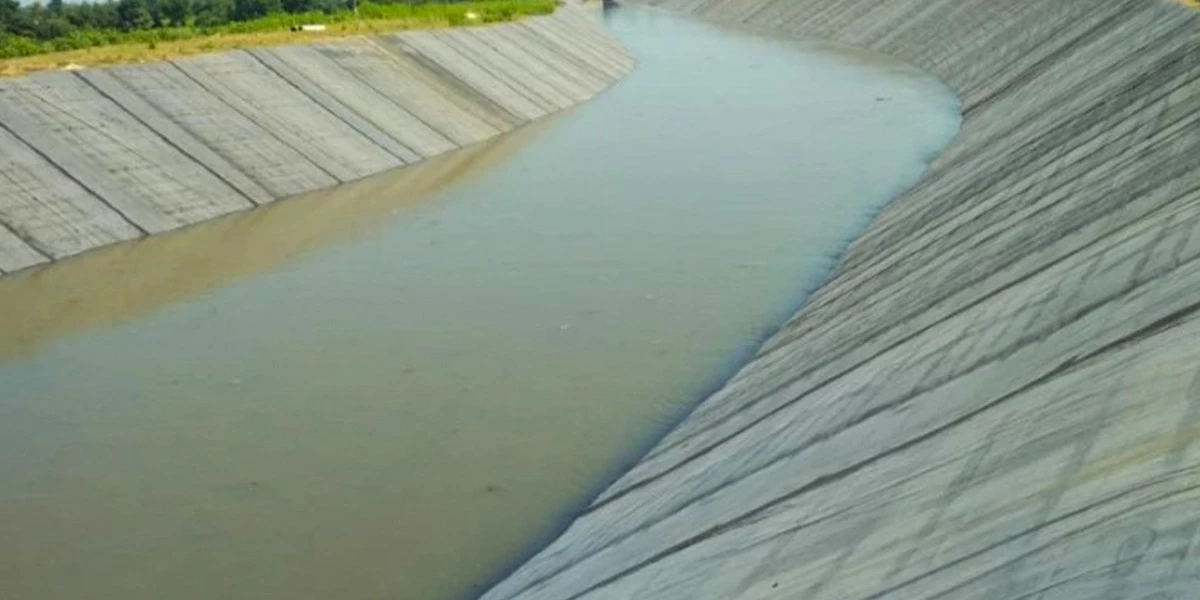

Dams are monumental engineering feats that serve as essential infrastructure for various purposes, including water storage, flood control, hydroelectric power generation, and irrigation. The construction of dams involves intricate planning and execution to ensure their long-term functionality and safety. Among the critical components of dam construction, waterproofing plays a pivotal role in safeguarding these massive structures against seepage and potential failures. In this article, we will delve into the significance of waterproofing of dams, with a specific focus on the use of innovative technologies like Hybrid Steel Gates and Geomembrane.
Waterproofing in the context of dam construction refers to the application of materials and technologies that make the dam impervious to water. This process is integral to the preservation of the dam's structural integrity and its ability to withstand the immense pressures exerted by the water it holds. Waterproofing is essential for several reasons:
1. Seepage Control: Dams, by their very nature, are designed to retain and control large volumes of water. Proper waterproofing measures are necessary to prevent water infiltration into the dam structure, which can lead to seepage. Seepage has the potential to erode the foundation, weaken the dam, and ultimately result in catastrophic dam failure.
2. Longevity: Waterproofing solutions are paramount in extending the lifespan of dams. Over time, exposure to water and environmental conditions can cause structural deterioration of the dam. Effective waterproofing helps to shield the dam against these elements, ensuring its durability and longevity.
3. Safety: The consequences of dam failures can be catastrophic, resulting in loss of life, extensive property damage, and environmental disasters. Waterproofing measures are indispensable in minimising the risk of such failures and ensuring the safety of communities downstream.
Various methods are employed in the waterproofing of dams, taking into account factors such as the type, location, and design of the dam. These methods include:
- Concrete Admixtures: The incorporation of waterproofing admixtures into the concrete mix used in dam construction is a widely adopted practice. These admixtures enhance the impermeability of the concrete, serving as a strong defence against water infiltration.
- Membrane Waterproofing: Membrane systems, consisting of either synthetic or natural materials, are applied to the surface of the dam. These membranes create a barrier that prevents water infiltration, effectively safeguarding the structure from seepage. Companies like Yooil Envirotech offer leakage solutions through such methods With a proven durability of up to 40 years, can withstand direct UV rays and is resistant to toxic chemicals, punctures, oxidation, and elongation. The superior durability performance allows for the geomembrane to be installed without any cover-up material, which makes the installation process much quicker and more efficient compared to other commonly used materials such as HDPE, PVC, and LLDPE. BGM has drinkable pot water safe certified, NSF certification.
- Grouting: Grouting involves the injection of cement-based or chemical grouts into the soil surrounding the dam or directly into its structure. This process seals cracks and fissures, preventing seepage and ensuring the dam's watertightness.
- Bentonite Clay: In dam construction, bentonite clay, a naturally occurring substance, is often utilised as a sealant. When hydrated, it forms a dense and impermeable barrier, effectively blocking the passage of water.
Recent technological advancements have introduced innovative solutions that enhance the waterproofing of dams. Among these advancements, Hybrid Steel Gates has emerged as a transformative technology in this field. These gates, constructed from steel and equipped with advanced sealing mechanisms, can be integrated into dam spillways to regulate water flow and prevent uncontrolled water passage. By incorporating Hybrid Steel Gates, not only is the waterproofing of dams improved, but operational flexibility is also increased. Water Management companies Like Yooil have a huge catalogue of clients that have been satisfied with the technology and engineering used by Yooil to develop such Hybrid Steel gates
Hybrid Steel Gates offers several key advantages, including effective seepage control, durability, operational flexibility, environmental friendliness, and safety enhancement. These gates are designed to withstand extreme weather conditions and the corrosive effects of water, making them highly durable and resistant to wear and tear. Additionally, they offer precise control over water discharge, allowing for efficient water management and maximising the utility of water stored in the dam. While ongoing maintenance is crucial to preserving the functionality and integrity of dam structures, Hybrid Steel Gates play a crucial role in safeguarding the structural integrity of dams and enhancing safety for communities downstream.
Maintenance is crucial in adapting dams to the challenges presented by changing climate conditions. With climate change resulting in more extreme weather events, such as heavy rainfall and prolonged droughts, the effective management of water resources by dams is becoming increasingly important. Regular assessments and upgrades of waterproofing systems are necessary to address these challenges.
Water proofing of dams guarantees the structural integrity, longevity, and safety of these essential infrastructural assets. Given the impact of climate change and the growing demand for water and energy resources, the development and maintenance of waterproofing systems are of utmost importance.
The incorporation of innovative technologies like Hybrid Steel Gates not only enhances the waterproofing capabilities of dams but also contributes to their adaptability and efficiency in managing water resources. Proper construction, regular maintenance, and the utilisation of advanced waterproofing techniques are crucial in ensuring that dams continue to fulfil a critical role in meeting the needs of communities and industries worldwide.
